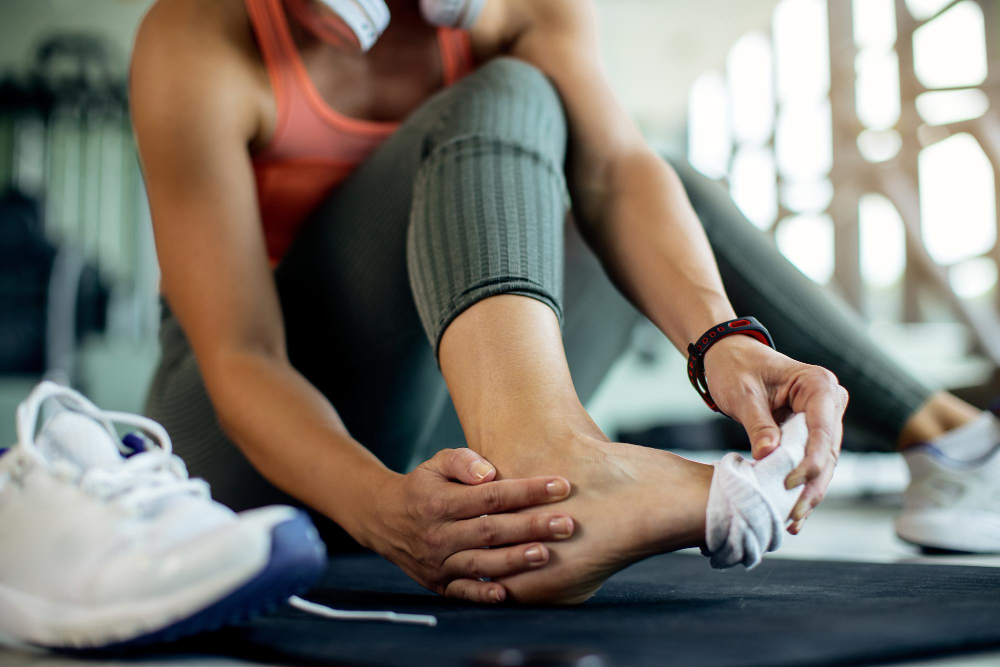Achilles tendinitis is a painful and often frustrating condition that can make everyday movement feel like a chore. Whether you’re someone who loves to stay active or simply need to be on your feet throughout the day, the Achilles tendon plays a crucial role in how you move. This strong band of tissue connects your calf muscles to your heel bone, making it essential for walking, running, jumping and even just standing upright.
When this tendon becomes irritated or inflamed, the result is often pain and stiffness, particularly at the back of the heel or lower leg. Although it’s most common among runners and athletes, Achilles tendinitis can affect anyone, and especially those who push their bodies a little too hard or have poor foot mechanics. Understanding the causes and taking steps to manage the condition early on can make a big difference in both recovery and long term foot health.
So What Causes Achilles Tendinitis?
This condition typically results from repetitive stress or overuse and it’s especially common in people who increase their activity levels too quickly, wear unsupportive footwear or have existing issues like flat feet or tight calf muscles. Essentially, anything that puts repeated strain on the Achilles tendon can cause microscopic tears and inflammation over time. And once irritated the tendon doesn’t always get the rest it needs to heal properly, especially if you continue with normal activities without addressing the root cause.
Even something as seemingly minor as a daily walk in unsupportive shoes can keep the tendon in a constant state of irritation. While in some cases, biomechanical issues like overpronation (where the foot rolls too far inward) can place additional strain on the tendon and contribute to ongoing pain and dysfunction.
Common causes of Achilles Tendinitis include:
- Sudden increase in physical activity without proper conditioning
- Wearing unsupportive or worn out footwear
- Tight calf muscles placing extra tension on the tendon
- Overpronation (excessive inward rolling of the foot while walking or running)
- Repetitive strain from running, jumping or prolonged standing
- Inadequate warm up or stretching before exercise
- Poor biomechanics or foot alignment issues
- Aging, which can reduce tendon flexibility and strength
Recognising the Signs and Symptoms
Achilles tendinitis usually begins with mild discomfort, but the symptoms often worsen if left untreated. You might notice a dull ache at the back of your leg after exercising, or stiffness and tenderness when getting out of bed in the morning. For many, the pain flares up during physical activity and then lingers long after stopping. Swelling, redness or a thickening of the tendon are also common signs, and some people even experience a cracking or creaking sensation when moving their ankle.
As the inflammation continues, walking up stairs or even standing for extended periods can become uncomfortable. While the symptoms might vary in intensity, they’re typically persistent and tend to get worse with continued activity or poor footwear choices. That’s why it’s important to listen to your body and take early action.
How Custom Insoles Make a Difference
When it comes to managing Achilles tendinitis, custom insoles can make a significant difference. These insoles are designed to support the unique shape and mechanics of your feet, helping to reduce unnecessary strain on the Achilles tendon. By improving alignment and distributing weight more evenly, custom insoles can limit the excessive motion that often contributes to tendon irritation. For those dealing with overpronation, a common contributor to Achilles issues, the right insole can help correct foot positioning and reduce stress on the back of the leg.
Some insoles may also incorporate a slight heel lift, which shortens the stretch on the tendon and offers immediate relief by taking pressure off the inflamed area. Over time, this added support not only reduces pain but encourages better movement patterns and helps prevent the condition from recurring. Plus, quality cushioning throughout the insole absorbs shock with each step, making walking and running feel a lot more comfortable.
Steps You Can Take for Long Term Relief
Aside from using insoles, managing Achilles tendinitis often involves a combination of strategies aimed at reducing inflammation and preventing further damage. So resting when pain flares up, applying ice, stretching tight calves and gradually increasing physical activity can all support healing. It’s also important to choose supportive footwear and avoid sudden changes in training routines or intensity. While these steps can help, addressing the way your feet move on a daily basis is often the missing link in long term recovery. That’s where custom insoles come into play as they tackle the underlying issues that may be causing the problem in the first place, making it easier to return to your routine without risking further injury.
At FixiFoot, we design custom orthotic insoles that are tailored to your specific foot shape and movement patterns, helping you manage conditions like Achilles tendinitis with confidence. Whether you’re looking to ease discomfort, get back to exercise or simply walk pain free again, the right insole can make all the difference.


